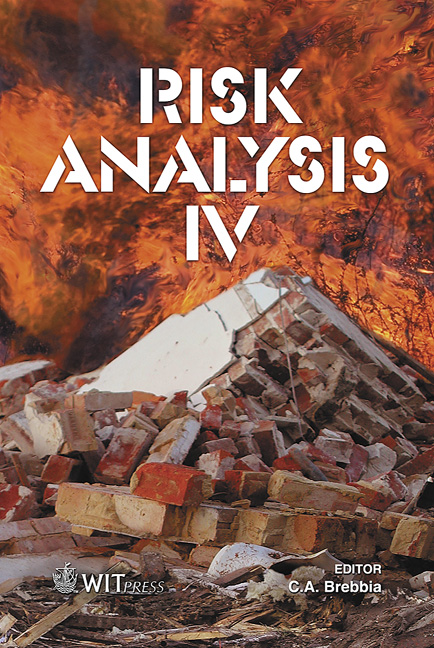A Software Approach To Spatial Predictions Of Natural Hazards And Consequent Risks
Price
Free (open access)
Transaction
Volume
77
Pages
17
Published
2004
Size
2,009 kb
Paper DOI
10.2495/RISK040261
Copyright
WIT Press
Author(s)
A. G. Fabbri, C.-J. F. Chung & D.-H. Jang
Abstract
This contribution proposes the development of a computer system for spatial analysis in order to meet the requirements of predictive mapping of natural hazards. The approach is new in that it complements existing GIS and image analysis systems with advanced analytical procedures based on validation techniques to construct risk-assessment spatial representations for decision makers. A three-stage strategy has been developed that consists of: (i) construction of a hazard prediction map using spatial databases for timepartitioned distributions of \“future” hazardous events, such as landslides, avalanches, subsidence or floods, and supporting data layers such as DEMs, and land use, surficial deposit, geology, geomorphology, and other thematic maps; (ii) validation/reliability of prediction results and estimation of the probability of occurrence for each predicted hazard level; and (iii) generation of risk maps with the introduction of socio-economic factors representing assumed or established vulnerability levels by combining the prediction map in the first stage and the estimated probabilities in the second stage with socio-economic data. The approach should be interactive and provide several mathematical prediction models (fuzzy sets, empirical likelihood ratio, and multivariate statistical models such as logistic and linear models) and a variety of procedural flows for the analysis of layer-by-layer and multi-layer inputs, the generation and display of prediction-rate functions and tables, cross-validation analysis of grouped occurrences, sequentially-selected, sequentially excluded occurrences by iterative processes, and the use of the fuzzy boundary concept of class boundaries to represent spatial uncertainties. An application from a study area affected by mass movements in Korea is used to exemplify the analytical structure and modeling power implied in the software approach proposed here to provide a fundamental tool for decision making. Keywords: landslide hazard, risk, prediction, cross-validation, software, mathematical models, analytical strategy.
Keywords
landslide hazard, risk, prediction, cross-validation, software, mathematical models, analytical strategy.





